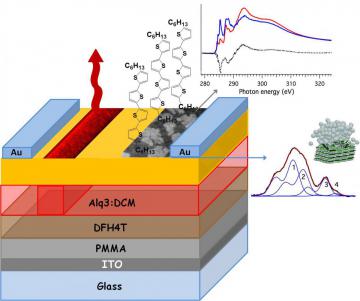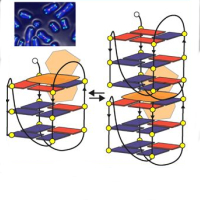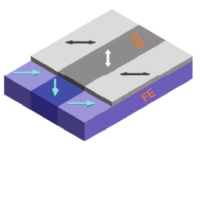Interface Functionalities in Multilayer Stack OLETs
Herein is described a multidisciplinary approach to understand the performance limitations of small molecule organic light emitting transistors (OLETs) based on a layered architecture, an innovative architecture potentially competitive with the state of the art and more flexible for spectral emission control.
 The processes of charge injection and field-effect transport at metal/organic and organic/organic interfaces are analysed using microscopic and spectroscopic techniques in coordination.
The processes of charge injection and field-effect transport at metal/organic and organic/organic interfaces are analysed using microscopic and spectroscopic techniques in coordination.
Atomic force microscopy and ultrasonic force microscopy are employed to characterize the interface morphology and the initial growth stages of organic films where charge transport actually occurs. X-ray diffraction and near edge X-ray dichroic absorption with linearly polarised light allow to determine the unit cell packing and the molecular orientation at the active organic interfaces, as well as the amount of non-ordered domains. Moreover, chemical reactivity at the interfaces are measured by X-ray photoelectron spectroscopy. It is found that a strong reaction occurs at the metal-organic interfaces, with molecular fragmentation. Additionally, the transport properties strongly depend on the nature of the materials forming the organic stack. Specifically, amorphous conjugated films as bottom layers can promote an increased molecular disorder in the upper active layer, with a concomitant deterioration of the conduction properties.
Raffaella Capelli, Franco Dinelli, Massimo Gazzano, Riccardo D'Alpaos, Andrea Stefani, Gianluca Generali, Mauro Riva, Monica Montecchi, Angelo Giglia and Luca Pasquali, Interface Functionalities in Multilayer Stack Organic Light Emitting Transistors (OLETs), Adv. Funct. Mater. 24, 5603 (2014) DOI








